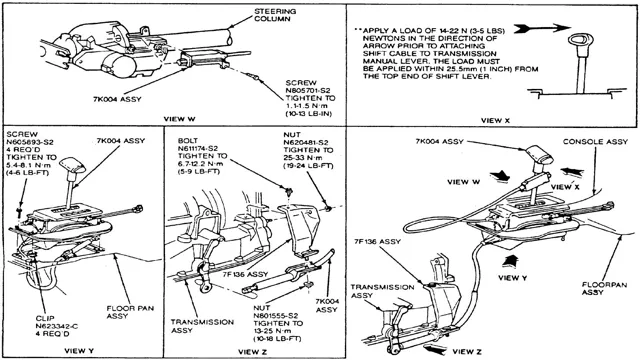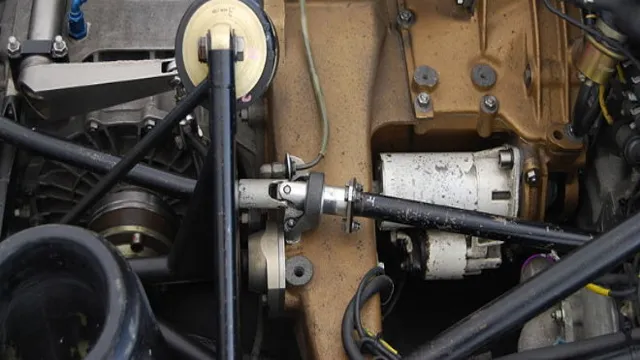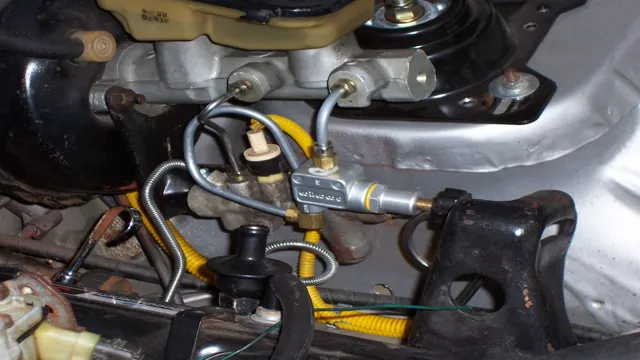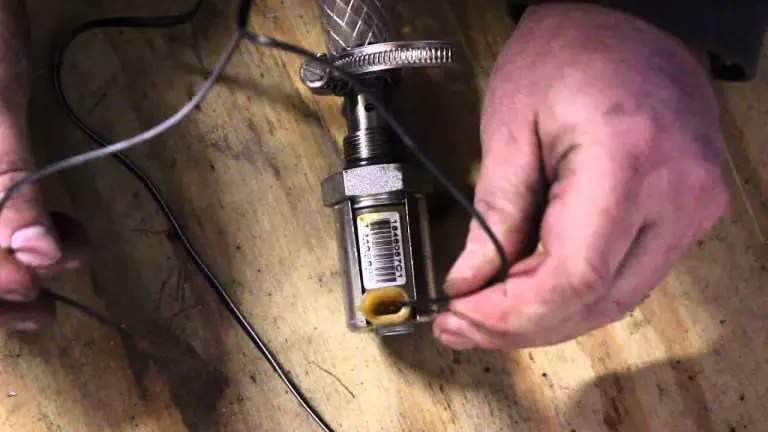Smooth Shifting: A Step-by-Step Guide on How to Adjust Your Manual Shift Linkage
Shifting gears manually is a fundamental aspect of owning a manual transmission vehicle. However, with constant use, the shift linkage may wear out, leading to difficulty in shifting or even worse, a complete breakdown of the transmission. The good news is that adjusting the manual shift linkage is a straightforward task that you can do yourself.
By doing so, you’ll save time and money that you would have otherwise spent on a mechanic. This comprehensive guide will walk you through the steps needed to adjust your manual shift linkage. First, we’ll take you through the signs that indicate your shift linkage needs adjustment.
Then, we’ll delve into the tools you’ll need to get the job done correctly. We’ll also provide a step-by-step guide on how to adjust the shift linkage, ensuring that you don’t miss any critical steps. Furthermore, we’ll touch on the benefits of adjusting your manual shift linkage regularly.
From smoother gear shifts to a more comfortable clutch operation, you’ll appreciate why it’s essential to keep this component in tiptop condition. Plus, we’ll provide some extra tips on how to maintain your shift linkage, extending its lifespan further. By the end of this guide, you’ll have a comprehensive understanding of how to adjust your manual shift linkage and keep your vehicle in great running condition.
Whether you’re a seasoned mechanic or a complete beginner, you’ll appreciate the straightforward language and practical tips that we’ve included. So, let’s get started!
Understanding Manual Shift Linkage
If you’re having trouble shifting gears on your manual transmission, it could be due to a misadjusted shift linkage. Luckily, adjusting it is a relatively straightforward process that most gearheads should be able to handle with the right tools and a bit of knowledge. The first step is to locate the shift linkage under the hood and determine whether it’s too loose or too tight.
If it’s too loose, you’ll need to tighten the linkage by lengthening it or adjusting the locknut. If it’s too tight, you’ll need to shorten the linkage by adjusting the rod end or turnbuckle. Once you’ve made the adjustment, test the shifter to see if it’s engaging in all gears smoothly.
With a bit of trial and error, you should be able to get the perfect adjustment and enjoy seamless shifting on your manual transmission.
What is manual shift linkage?
Manual shift linkage is essentially the system that connects the driver’s gear selection to the transmission. When the driver moves the gear lever, it engages the shift linkage, which then physically moves the transmission’s gears into the selected position. Understanding how this system works is important for anyone who drives a manual transmission vehicle.
If there is an issue with the shift linkage, it can cause problems with gear selection, causing the transmission to get stuck or shift unsmoothly. In short, the shift linkage is what makes it possible for the driver to control the gears of a manual transmission vehicle. So, next time you are driving a manual car, take a moment to appreciate the simplicity and importance of the shift linkage system that connects your every move to the transmission.

Why does it require adjustment?
Manual Shift Linkage Manual shift linkage is an essential component of manual vehicles that allows drivers to shift gears. Just like every other machine parts, manual shift linkage may require some adjustments to remain functional. When manual shift linkage is not in tune with the driver’s preference, shifting gears may become difficult as the gears will not engage fully.
The linkage connects the shifter in the car, through the floor pan, to the transmission, and it is vulnerable to wear and tear from constant use. It may also become misaligned due to vibration or physical damage. Adjusting the linkage is necessary to ensure smooth gear changing and prolong the lifespan of the linkage.
It’s important to consult professional expertise when dealing with manual shift linkage adjustments as the process involves the precise configuration of different components. Regular maintenance and adjustment will prolong the lifespan of your manual shift linkage and ensure its optimal performance.
Tools You Will Need
When it comes to adjusting the manual shift linkage on your vehicle, there are a few tools you will need. First, you will need a wrench or pliers to loosen and tighten any bolts or nuts. A small pry bar or screwdriver may also come in handy to adjust any linkage rods that may be stuck or in need of fine tuning.
It is important to have a jack and jack stands to lift up your vehicle and safely support it while you work underneath. Additionally, a flashlight or work light will be helpful in providing better visibility in tight and dark spaces. It is always a good idea to have gloves and safety glasses to protect your hands and eyes, especially when working with any sharp or heavy parts.
With these simple tools and a little patience, you can easily adjust your manual shift linkage and ensure smooth shifting while driving.
Common tools required for the job
If you’re considering starting a new project or taking up a new hobby that requires tools, it’s essential to have the right ones. Some of the most common tools you’ll need include a hammer, screwdrivers, pliers, and a tape measure. These items are essential for most DIY or home improvement projects.
A hammer can be used for nailing items, while a screwdriver set is crucial for loosening and tightening screws. Pliers are helpful when working with small items or bending wire. A tape measure is essential for measuring materials accurately.
Additionally, make sure you have safety glasses and gloves to protect yourself while using these tools. By having the right tools on hand, you’ll be able to tackle any project with ease and ensure a successful outcome.
Additional tools required for specific models of cars
When it comes to specific models of cars, there may be additional tools required to perform maintenance or repairs. These tools can range from specialized sockets and wrenches to diagnostic equipment. One example of this is with certain BMW models that require a special tool to properly remove and install the oil filter cap.
Another instance is with hybrid vehicles that may require specialized tools to safely work around the high-voltage components. It’s important to do research on the specific model of your car and any unique tools that may be necessary before starting any maintenance or repairs. By using the proper tools, you can ensure that the job is done correctly and without causing any additional damage.
Identify the Problem
If you’re having trouble shifting gears in your manual transmission vehicle, there’s a good chance that your shift linkage needs to be adjusted. The first step in addressing this problem is to identify what’s causing it. This could be a simple matter of the linkage being out of adjustment, or it could be something more serious, like a damaged clutch or transmission.
Start by inspecting the linkage itself, looking for any signs of wear or damage. If everything appears to be in good condition, try adjusting the linkage according to the manufacturer’s specifications. This may involve tightening or loosening certain bolts or adjusting the length of the linkage rod.
If the problem persists, consult a mechanic or transmission specialist to diagnose and fix the issue. Keep in mind that it’s always better to err on the side of caution when dealing with transmission problems, as they can quickly escalate and become costly to repair.
Signs that manual shift linkage needs adjustment
Manual shift linkage adjustment If you drive a manual transmission vehicle, you know the importance of having a smooth and precise shift change. If you are having difficulty finding gears or if your gear shift feels sloppy, it may be time to adjust your manual shift linkage. One of the most common signs of a faulty linkage is if the shifter feels loose or has excessive play.
Alternatively, if the shifter is difficult to move or feels stuck, this could be a sign of a linkage issue. You may also hear strange noises or feel grinding sensations when shifting gears, indicating that your linkage may need adjusting. It’s essential to address any issues with your manual shift linkage promptly, as a defective linkage can lead to transmission damage and even vehicle accidents.
Regular maintenance and inspection of your vehicle’s linkage can help prevent serious issues and ensure your vehicle’s reliability.
How to troubleshoot the issue
When you’re trying to troubleshoot an issue, the first step is always to identify the problem. You can’t find a solution unless you know what you’re dealing with. The best way to do this is to gather as much information as possible.
What specifically is happening? Is it happening consistently or sporadically? Are there any error messages or warning signs? Does the problem persist after restarting? Once you have a clear idea of the problem, you can move on to finding a solution. And remember, don’t be afraid to ask for help if you’re stuck – sometimes a fresh perspective can make all the difference.
Adjusting the Manual Shift Linkage
Are you having trouble shifting gears on your manual transmission vehicle? It might be time to adjust your manual shift linkage. The shift linkage connects the gear shifter to the transmission and allows you to change gears. Over time, the linkage can become misaligned, causing difficult shifting or even transmission damage.
To adjust the linkage, first, locate the linkage rods near the transmission and shifter. Then, determine the correct length of the rods by referencing the manufacturer’s specifications. Loosen the bolts connecting the rods and adjust their length until they match the specifications.
Finally, tighten the bolts and test your shifting to ensure it’s smooth and effortless. By adjusting your manual shift linkage, you can avoid costly transmission repairs and ensure your vehicle runs smoothly.
Step by step guide for adjusting the linkage
If you’re having issues with your manual shift linkage, it may be time to adjust it. Here’s a step-by-step guide for adjusting your manual shift linkage. Firstly, locate the linkage under the car.
It should be near the shifter and transmission. Then, loosen the bolt or nut holding the linkage in place. This will allow you to move the linkage to adjust the alignment.
Next, adjust the linkage up or down until it follows a straight line from the shifter to the transmission. This can take a bit of trial and error, so don’t be afraid to make small adjustments until it’s aligned correctly. Once you have it aligned, tighten the bolt or nut back into place.
Finally, test it out by shifting through all the gears to make sure it’s working smoothly and without any issues. Remember to be patient and take your time. Properly adjusting the manual shift linkage can improve the overall performance of your vehicle.
So if you notice any issues, don’t hesitate to adjust the linkage.
Safety precautions to take
When adjusting your manual shift linkage, safety is of utmost importance. Start by ensuring you are in a safe space, with no traffic or pedestrians around. Have the car on a level surface and make sure the parking brake is engaged.
Before attempting to adjust the linkage, ensure that the car’s manual is on hand and thoroughly read through the relevant section. Familiarize yourself with the tools required and make sure they are in good condition. If you have any doubts or feel unsure, it is best to seek the help of a professional mechanic.
Remember, safety is key when dealing with any parts of your car, so take every precaution necessary to avoid accidents. By taking these safety measures, you can confidently and safely adjust the manual shift linkage on your car.
Testing the Adjustment
Adjusting manual shift linkage can be a tricky task, but with the right steps, it can be done easily. Before anything else, make sure that the vehicle is fully supported on jack stands or a sturdy lift. To start the adjustment process, locate the shift linkage on the transmission.
There should be an adjustment nut or bolt that holds the linkage in place. Loosen it just enough to allow for movement of the linkage. Once you’ve loosened it, move the shifter into the desired gear and tighten the nut or bolt.
Test the shift lever to see if it moves smoothly between gears and make any further adjustments as needed. A well-adjusted linkage ensures smooth shifting and is essential to avoid costly transmission repairs. With these simple steps, you can adjust your manual shift linkage like a pro.
How to test the adjustment after making changes
After making changes to your adjustment, it’s important to test it to ensure it’s working properly. You can test the adjustment by looking at the data before and after the change. This will help you measure the impact of the adjustment and determine if it’s producing the desired results.
You can also test the adjustment by running experiments to compare the effectiveness of the original and adjusted settings. This testing will allow you to make informed decisions about how to fine-tune the adjustment for maximum impact. By monitoring the results and making iterative changes, you can optimize your adjustment to achieve your goals.
Always bear in mind that testing is a critical component of adjusting, and it should be performed regularly and systematically to ensure continuous improvements.
Preventative Maintenance Tips
If you’re experiencing difficulty shifting gears in a manual transmission vehicle, the issue may lie with the shift linkage. It’s important to know how to adjust manual shift linkage to prevent long-term damage to the transmission. First, locate the shift linkage under the car’s hood and look for any signs of wear and tear such as rust or slack in the linkage.
Begin by loosening the shift linkage bolt, then manually adjust the linkage to your desired position, ensuring that it’s properly aligned with the transmission. Finally, tighten the linkage bolt and test the gears to ensure they’re shifting smoothly. Remember to regularly inspect and adjust your shift linkage to ensure optimal performance from your manual transmission vehicle.
How to keep manual shift linkage in good condition
Manual shift linkage is a vital component of a car’s transmission system that requires regular maintenance. Keeping the linkage in good condition will ensure smooth and reliable shifting, preventing potential wear and tear to the transmission. One preventative maintenance tip is to inspect the linkage regularly.
This includes checking for loose or worn-out components and proper lubrication to prevent any corrosion build-up. Additionally, taking care when shifting gears is crucial to keeping the shift linkage in good shape. Avoid harsh or abrupt movements when shifting, as this can cause unnecessary stress on the linkage.
By implementing these simple tips, you can help extend the lifespan of your manual shift linkage and enjoy a smoother driving experience.
When to have professional maintenance done
When taking care of your home, it’s important to prioritize preventative maintenance to avoid major repairs down the road. One key aspect of this is knowing when to have professional maintenance done. While some tasks can be handled on your own, such as changing air filters or cleaning gutters, others require the expertise of a trained professional.
For example, it’s recommended to have your HVAC system inspected and serviced once a year by an experienced technician. This can help identify potential issues early on and ensure efficient operation. It’s also important to have your plumbing and electrical systems inspected periodically to avoid any dangerous or costly emergencies.
By scheduling regular maintenance with trusted professionals, you can keep your home running smoothly and avoid unexpected expenses. So don’t be afraid to call in the experts when it comes to important maintenance tasks around your home!
Conclusion
And there you have it, folks! Adjusting your manual shift linkage is a lot like finding the right balance in life – it requires patience, persistence, and a bit of finesse. So, next time you feel like your shifter is giving you a hard time, just remember that with a little bit of know-how, and perhaps a few rounds of practice, you can get it back in tip-top shape. Happy shifting!”
FAQs
How can I tell if my manual shift linkage needs adjustment?
If you’re having difficulty shifting gears or are experiencing grinding or strange noises when shifting, it could be a sign that your shift linkage needs adjustment.
Can I adjust the shift linkage myself or do I need a mechanic?
It’s possible to adjust the shift linkage yourself if you’re handy with cars and have the right tools. However, if you’re unsure or uncomfortable with the process, it’s best to take it to a mechanic.
What tools will I need to adjust the manual shift linkage?
Depending on your make and model, you may need a socket set, wrenches, pliers, and a pry bar. Consult your car’s manual or online forums for specific instructions.
What’s the general process for adjusting the manual shift linkage?
The process involves locating the shift linkage under the car and adjusting the length of different rods or cables to ensure proper shifting action. It may also involve adjusting the positions of the shifter and the transmission. Again, it’s important to consult your car’s manual or online forums for specific instructions.







